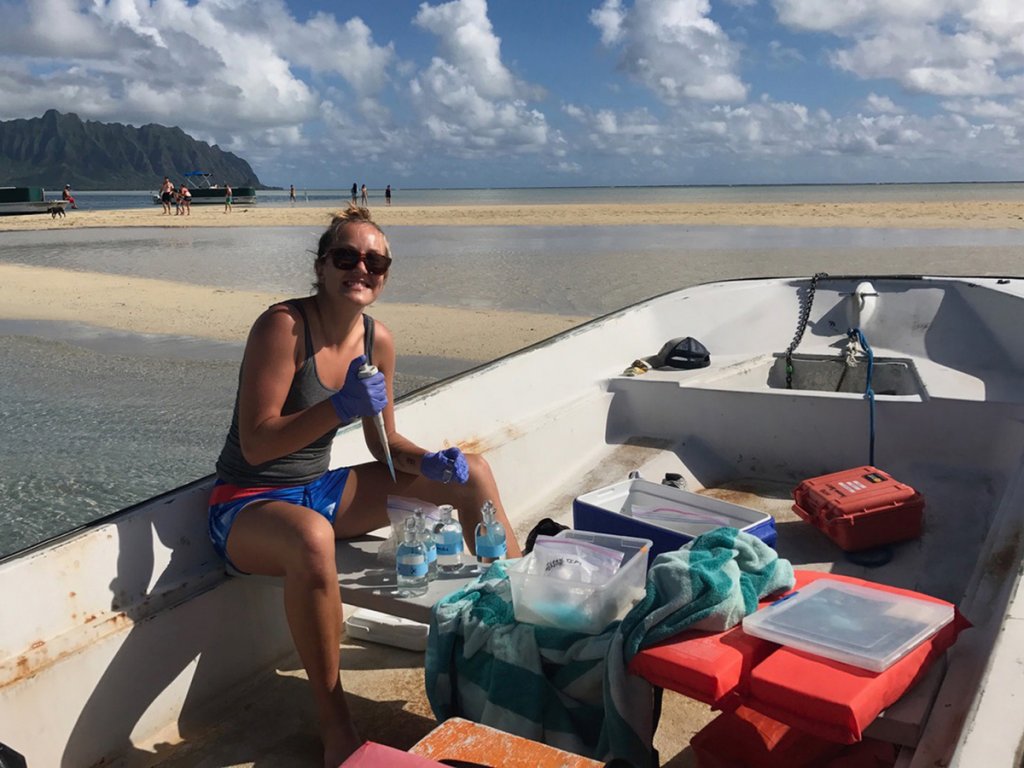Coral reef CO2 variations at the Coastal Ocean Hawaiʻi Acidification Network (COHAMN): Impact of basin scale oceanographic forcing
PRINCIPAL INVESTIGATOR: Eric DeCarlo
Co-INVESTIGATOR: Michael Guidry
Graduate Fellow: Lucie Knor

This study offers to continue the highly successful MAPCO2 buoy program that we have been conducting at four coral reef sites around the island of Oʻahu, Hawaiʻi, through a combination of Sea Grant, NOAA/OAP and NOAA/PMEL funding. We use autonomous buoys to measure carbon dioxide in the atmosphere and dissolved in seawater as well as a variety of other environmental parameters that are relevant to the biogeochemistry of carbon dioxide. Our buoys are deployed in pairs along a gradient of conditions across a barrier reef and along the shore of urban Honolulu and one of our objectives is to resolve local from basin-scale drivers of the inorganic carbon system in waters of coral reefs.
Our study will also logistically support reef studies conducted by some of our colleagues at other institutions and be part of larger national and international efforts under the auspices of NOAA and the Global Ocean Acidification Observing Network.
We intend to test three null hypotheses (a null hypotheses is a hypothesis of no significant difference): 1) The carbon dioxide chemistry and gas exchange between the ocean and atmosphere on Oʻahu reefs is driven only by local physical processes, 2) The variability in carbon dioxide observed in the water column of Oʻahu reefs is driven exclusively by reef-scale metabolism, and 3) long term trends of carbon dioxide in Hawaii coastal waters are not affected by large scale oceanic-climatic processes (such as El Niño). We expect to find that barrier reefs are characterized by greater variations and gas fluxes than fringing reefs because of a dominance of local physical and biogeochemical forcing and in part due to oceanic scale (climate) events. We also expect to show that the barrier reef continues to accumulate calcium carbonate (i.e., is building) but that cycles of calcification/dissolution at all reef complexes drive the changes in carbon dioxide that we observe. Finally, we anticipate that fringing reef sites will eventually become sinks of carbon dioxide from the atmosphere, much like the open ocean already is. These assertions and their outcome have global significance for major tropical coral reef ecosystems worldwide.

